Mold Prevention Tips and Treatment for Your Home
MoldMold is a type of fungus that grows in damp or humid conditi... More is a very common problem to have within homes and buildings because it is everywhere. MoldMold is a type of fungus that grows in damp or humid conditi... More sporesSpores are microscopic reproductive units of fungi or mold t... More are a constant presence in indoor and outdoor air and when the sporesSpores are microscopic reproductive units of fungi or mold t... More find the right conditions, moldMold is a type of fungus that grows in damp or humid conditi... More colonies will form. The appearance of moldMold is a type of fungus that grows in damp or humid conditi... More growth within your home is a major problem because it can cause serious property damage over time and negatively impact the health of those who are exposed.
The best way to protect your home from moldMold is a type of fungus that grows in damp or humid conditi... More growth is to prevent it from occurring in the first place. The most effective way to prevent moldMold is a type of fungus that grows in damp or humid conditi... More growth is to control the environment within your home and address any issues involving moisture or water damage. In this guide, we will discuss the best tips to help you prevent moldMold is a type of fungus that grows in damp or humid conditi... More growth from ever appearing in your home. By keeping your home moldMold is a type of fungus that grows in damp or humid conditi... More free, you will protect your home from damage and protect the health of those within your home.
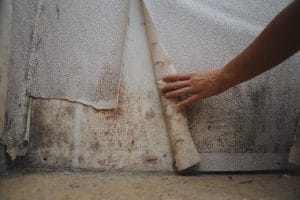
MoldMold is a type of fungus that grows in damp or humid conditi... More only needs a moisture source and an organic food source to survive
What is Mold?
MoldMold is a type of fungus that grows in damp or humid conditi... More is a naturally occurring fungus that breaks down organic materialsOrganic materials are derived from living organisms, such as... More. There is always a certain concentration of moldMold is a type of fungus that grows in damp or humid conditi... More sporesSpores are microscopic reproductive units of fungi or mold t... More in the air both indoors and outdoors, and high concentrations increase the risk of moldMold is a type of fungus that grows in damp or humid conditi... More growth and related health effects. The moldMold is a type of fungus that grows in damp or humid conditi... More sporesSpores are microscopic reproductive units of fungi or mold t... More will accumulate in areas that provide ideal conditions and quickly form moldMold is a type of fungus that grows in damp or humid conditi... More colonies.
MoldMold is a type of fungus that grows in damp or humid conditi... More only needs two main things to survive: a moisture source and an organic food source. Cellulose is an organic material found in common building materials like wood and drywall and it is the main source of food for moldMold is a type of fungus that grows in damp or humid conditi... More growth in homes. The risk of moldMold is a type of fungus that grows in damp or humid conditi... More growth is also higher when the temperature is between 77 and 87 degrees Fahrenheit and the humidityHumidity is the amount of moisture or water vapor present in... More is between 60 and 90 percent.
There are many types of molds that can appear within a home, and they may vary in appearance. Indoor moldMold is a type of fungus that grows in damp or humid conditi... More growth may look slimy or fuzzy and can be black, blue, brown, or green in color. No matter what type of moldMold is a type of fungus that grows in damp or humid conditi... More is in your property, it can cause significant damage and affect your health.
Problems Caused by Mold Growth
As mentioned above, moldMold is a type of fungus that grows in damp or humid conditi... More growth is likely to appear in any area of a home that meets the right conditions. MoldMold is a type of fungus that grows in damp or humid conditi... More takes hold on surfaces that contain cellulose, and the damage will increase over time as the moldMold is a type of fungus that grows in damp or humid conditi... More continues to eat away at the materials. The affected materials will become discolored and weakened and extensive damage to structural elements like wood supports, walls, and ceilings can leadLead is a heavy metal that can be toxic to humans, especiall... More to severe structural damage. The longer you wait to remove moldMold is a type of fungus that grows in damp or humid conditi... More, the worse the damage will get and the more likely it is to spread to new areas.
The health issues caused by moldMold is a type of fungus that grows in damp or humid conditi... More are of great concern as those exposed to moldMold is a type of fungus that grows in damp or humid conditi... More can experience allergic reactions and more serious issues. The most common allergic reactions caused by moldMold is a type of fungus that grows in damp or humid conditi... More exposure include sore throat, coughing, trouble breathing, stuffy nose, eye irritation, and skin rashes. These reactions will get worse the longer one is exposed. Those who have asthma or compromised immune systems are especially vulnerable to severe allergic reactions.
Responding to moldMold is a type of fungus that grows in damp or humid conditi... More growth in your home immediately will help limit the damage and protect your health.
How to Prevent Mold Growth
MoldMold is a type of fungus that grows in damp or humid conditi... More growth cannot form without moisture, so the key to moldMold is a type of fungus that grows in damp or humid conditi... More preventionPrevention refers to actions taken to reduce the likelihood ... More is to control the moisture and humidityHumidity is the amount of moisture or water vapor present in... More levels in your home. The following tips will help you prevent moldMold is a type of fungus that grows in damp or humid conditi... More from ever appearing in your home.
Identify and Monitor High Risk Areas
Because moisture is the main trigger of moldMold is a type of fungus that grows in damp or humid conditi... More growth, areas of the home where there is water or moisture are the most vulnerable. This includes kitchens, bathrooms, attics, basements, and crawlspaces. Make sure you check these areas regularly for moldMold is a type of fungus that grows in damp or humid conditi... More growth and try to keep the water and moisture levels in these areas under control. You should also check windows where there is condensation.
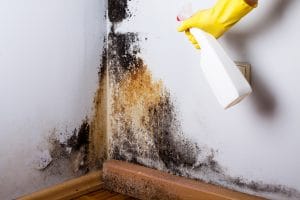
EPA suggests keeping the indoor humidityHumidity is the amount of moisture or water vapor present in... More between 30 and 60 percent
Clean Excess Water and Moisture
When there is water or an elevated level of moisture in an area of the home, moldMold is a type of fungus that grows in damp or humid conditi... More growth can form in as little as 24 to 48 hours. This means that spills, moisture, condensation, and standing water needs to be wiped up and removed within 24 hours to prevent moldMold is a type of fungus that grows in damp or humid conditi... More growth. Clean up your kitchen and bathroom after use so there is no water left behind and wipe up spills and condensation. If an indoor flood has caused your flooring, furnishings, and other materials in your home to become wet, call a water damage restoration professional immediately to remove the water and dry the affected materials.
Taking the following actions to waterproof your home will reduce the risk of water damage and help prevent moldMold is a type of fungus that grows in damp or humid conditi... More growth:
- Install and maintain a sump pumpA sump pump is a pump installed in a basement or crawlspace ... More in the basement
- Find and seal leaks around your windows and foundation
- Keep gutters and downspouts clean and in good repairRepair is the act of fixing or restoring damaged property, m... More
- RepairRepair is the act of fixing or restoring damaged property, m... More leaks right away
- Install a drainage system to improve the drainage around your home
Reduce Humidity with Ventilation
Keeping the moisture and humidityHumidity is the amount of moisture or water vapor present in... More levels under control in your home will reduce the risk of moldMold is a type of fungus that grows in damp or humid conditi... More growth. You can effectively control the moisture level in your home by improving ventilationVentilation is the process of exchanging or circulating air ... More.
It is important to keep high moisture areas like kitchens, bathrooms, and laundry rooms well ventilated and use fans, AC units, and dehumidifiers to improve ventilationVentilation is the process of exchanging or circulating air ... More. Appliances such as dryers and stoves should be vented to the outside of the home, not your attic. You can also open windows or run an exhaust fan for improved ventilationVentilation is the process of exchanging or circulating air ... More, especially when cooking, showering, or washing dishes.
Monitor Humidity Levels
To ensure that you are keeping the humidityHumidity is the amount of moisture or water vapor present in... More levels low enough in your home, you should monitor the levels with a moisture meterA moisture meter is a device used to measure the moisture le... More. You can buy a moisture meterA moisture meter is a device used to measure the moisture le... More at a hardware store to easily check the humidityHumidity is the amount of moisture or water vapor present in... More levels in your home. The EPA suggests keeping the indoor humidityHumidity is the amount of moisture or water vapor present in... More between 30 and 60 percent. If your humidityHumidity is the amount of moisture or water vapor present in... More levels are too high, clean up excess water and moisture and improve the ventilationVentilation is the process of exchanging or circulating air ... More.
Use Mold Resistant Products in Your Home
There are building materials like drywall and sheetrock that are developed to be resistant to moldMold is a type of fungus that grows in damp or humid conditi... More. MoldMold is a type of fungus that grows in damp or humid conditi... More resistant drywall is actually moisture resistant as it consists of a gypsum core covered in fiberglass. These walls are ideal for areas like the kitchen and bathroom where there is a lot of moisture. If you are remodeling your kitchen or bathroom, consider installing moldMold is a type of fungus that grows in damp or humid conditi... More resistant drywall.
Remove Clutter
Keeping your home free of clutter will reduce the risk of moldMold is a type of fungus that grows in damp or humid conditi... More growth as cluttered items create small climates with little ventilationVentilation is the process of exchanging or circulating air ... More that allow moldMold is a type of fungus that grows in damp or humid conditi... More to grow. The risk is especially high if cluttered items are blocking HVAC vents and registersRegisters are grilles or vents that cover openings in HVAC s... More. Make sure to clean up any clutter in your home and check that there is enough room in front of all the vents in your home. If there is furniture blocking any vents, move it out of the way to give the vents some space.
Landscaping and Gutter Maintenance
Some outside maintenanceMaintenance is the routine care, inspection, and repair of a... More can protect the inside of your home from water damage. It is important to make sure that the ground surrounding your home slopes away from the foundation to ensure that water drains away from your home. If the ground slopes towards your home, water will pool around the foundation and seep into the basement.
Cleaning the gutters and downspouts also helps prevent indoor water damage that can leadLead is a heavy metal that can be toxic to humans, especiall... More to moldMold is a type of fungus that grows in damp or humid conditi... More. Removing debris from the gutters will ensure that rainwater drains properly and is taken far enough away from the foundation with the downspouts. Clogged gutters can cause the water to spill over which can cause water damage to the siding and windows and cause water to accumulate near the foundation.
Use a Dehumidifier
If there are areas of your home like the basement that are moist or humid no matter what you do, put a dehumidifierA dehumidifier is a device that removes excess moisture from... More in these areas. Dehumidifiers are appliances that take moisture out of the air and help eliminate musty smells. You can use a portable dehumidifierA dehumidifier is a device that removes excess moisture from... More for specific areas of the home or install a whole house dehumidifierA dehumidifier is a device that removes excess moisture from... More that treats your entire home. Whole house dehumidifiers can be rather expensive, but a portable dehumidifierA dehumidifier is a device that removes excess moisture from... More may cost between $150 and $200.
How to Treat Mold in Your Home
Taking the actions described above will greatly reduce the risk of moldMold is a type of fungus that grows in damp or humid conditi... More growth in your home. However, because there is always moldMold is a type of fungus that grows in damp or humid conditi... More sporesSpores are microscopic reproductive units of fungi or mold t... More in the air, there is still a possibility that moldMold is a type of fungus that grows in damp or humid conditi... More growth can occur despite your best efforts to prevent it. The following steps can help you treat minor moldMold is a type of fungus that grows in damp or humid conditi... More issues:
- Protect yourself with a mask or N-95 respirator, rubber gloves that extend to the middle of your forearm, and goggles with no ventilationVentilation is the process of exchanging or circulating air ... More holes to keep out moldMold is a type of fungus that grows in damp or humid conditi... More sporesSpores are microscopic reproductive units of fungi or mold t... More.
- Treat the source of the moisture that caused the moldMold is a type of fungus that grows in damp or humid conditi... More growth if possible.
- Use a mixture of detergent and water or diluted cleaning strength vinegar on affected surfaces.
- Use a brush to scrub hard surfaces like tile and a rag for porousPorous describes a material that contains small openings or ... More surfaces such as drywall. Wipe away as much of the moldMold is a type of fungus that grows in damp or humid conditi... More as possible.
- After cleaning affected wood surfaces, you may need to sand the wood.
- For moldMold is a type of fungus that grows in damp or humid conditi... More that is difficult to remove, try undiluted white vinegar.
- When done, dispose of all rags, brushes, and rubber gloves in a sealed garbage bag and wash your clothes with hot water in a separate load.
You should only try to remove moldMold is a type of fungus that grows in damp or humid conditi... More growth yourself if it covers a space smaller than 10 square feet. If the moldMold is a type of fungus that grows in damp or humid conditi... More growth is too difficult for you to remove or covers a larger area, it is best to call mold remediation professionals to handle the job.
Professional Mold Remediation
If there is a moldMold is a type of fungus that grows in damp or humid conditi... More problem in your home, it is safer and more effective to call a professional for mold remediation services. Technicians will first uncover and isolate all the moldMold is a type of fungus that grows in damp or humid conditi... More growth on your property to prevent its spread and locate the source of moisture that caused the moldMold is a type of fungus that grows in damp or humid conditi... More growth. After fixing the moisture source, they will treat the affected surfaces and materials to remove the moldMold is a type of fungus that grows in damp or humid conditi... More and permanently damaged materials while preventing the moldMold is a type of fungus that grows in damp or humid conditi... More sporesSpores are microscopic reproductive units of fungi or mold t... More from spreading any further in your home. After all the moldMold is a type of fungus that grows in damp or humid conditi... More is removed, the technicians will repairRepair is the act of fixing or restoring damaged property, m... More and restore the affected areas.










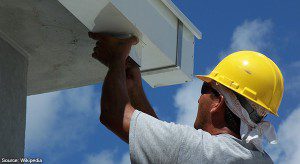
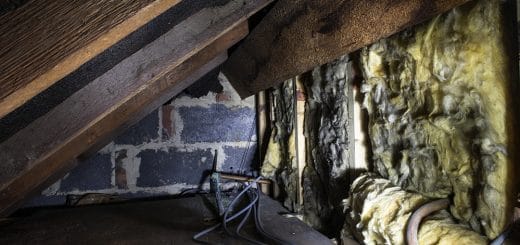
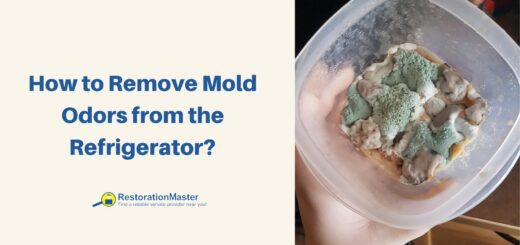
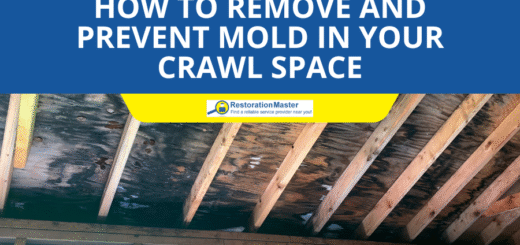
Mold Removal is a process that can be done only by the professionals as it require technical know-how. Water Damage Restoration